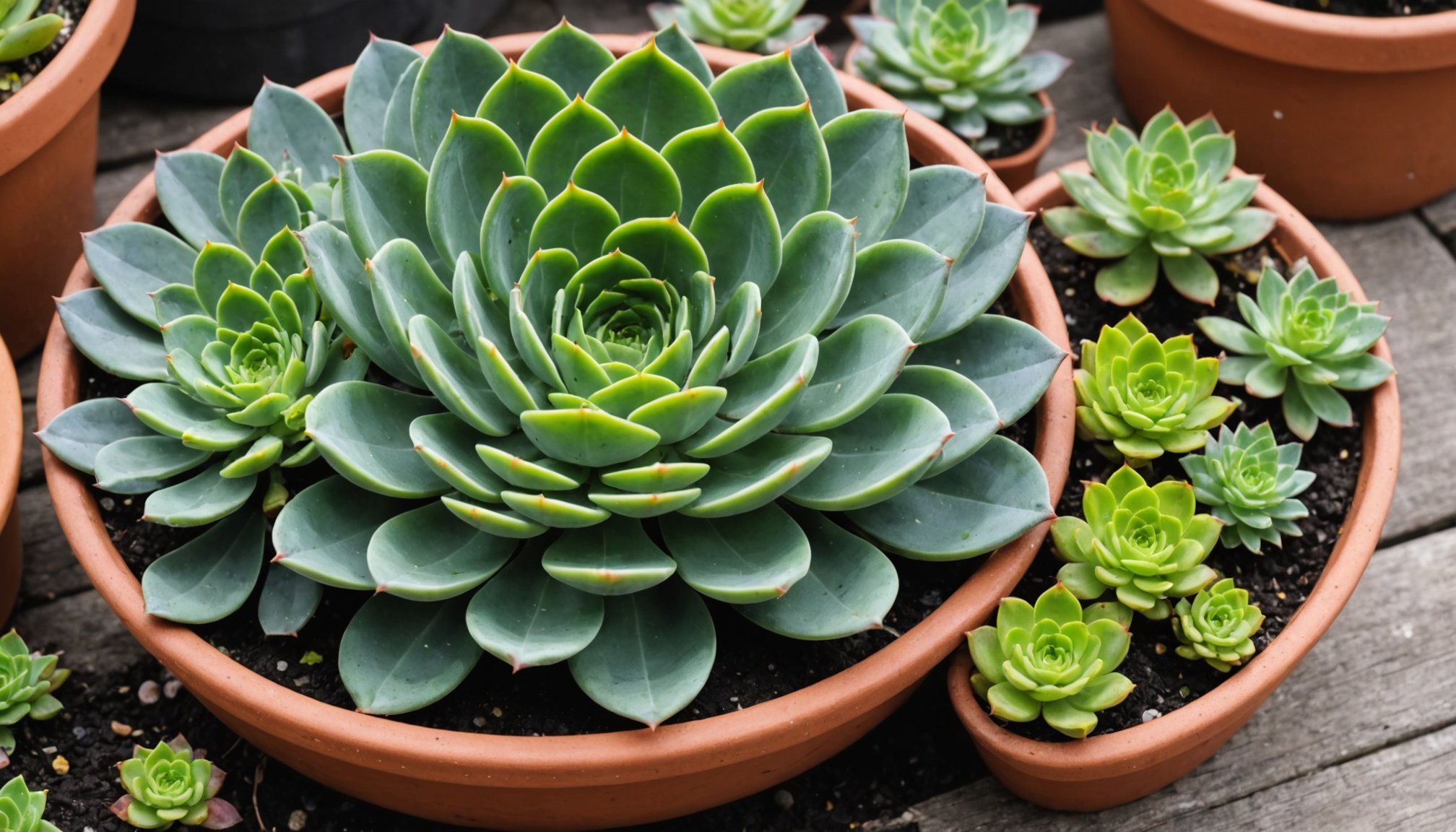Watering succulents can be tricky, especially in the unique UK climate. Overwatering can lead to rot, while under-watering risks drying them out. Understanding your plants' needs based on seasonal changes and environmental conditions is essential. This guide provides you with a tailored approach to watering your succulent garden effectively, ensuring vibrant growth and health. Discover the optimal frequency for watering and learn practical tips to thrive in British weather while nurturing these resilient plants.
Understanding Succulent Watering Needs
Succulent care requires understanding the unique succulent watering needs, especially within the UK climate. These resilient plants have adapted to store water in their leaves, stems, or roots, allowing them to thrive in arid conditions. However, their water storage mechanisms mean that improper watering can lead to health issues.
Dans le meme genre : Thriving Citrus Trees in the UK”s Changing Climate: Tips for Success
In the UK climate, which can be more humid and less sunny than their native habitats, succulents may require less frequent watering. It's crucial to adjust watering habits to prevent overwatering, a common mistake that can lead to root rot. Overwatered succulents often exhibit signs such as mushy leaves, stem collapse, and discolouration. Conversely, underwatering can cause shrivelled leaves and slowed growth.
To ensure proper watering, consider the plant's environment and season. During the growing season, generally spring and summer, succulents might need more water as they actively grow. In contrast, they require less water in the dormant winter months. Always check the soil moisture before watering; it should be completely dry before adding more water. This approach helps maintain succulent health and prevents common watering issues. Understanding these nuances in succulent care will help your plants flourish in the UK climate.
A lire également : Transform Your UK Urban Garden: A Step-by-Step Guide to Building a Sustainable Composting System
Ideal Watering Frequency for Different Seasons
Navigating the seasonal watering needs of succulents is crucial to their health, especially in the UK. The watering schedule should adapt to the changing UK weather, ensuring that your plants receive the right amount of hydration throughout the year.
Spring and Summer Watering Tips
During spring and summer, succulents enter their growing phase. This is when they require more frequent watering. Ensure the soil is thoroughly soaked, but allow it to dry completely between waterings. Typically, watering every 7-10 days is sufficient, depending on your local climate conditions.
Autumn Adjustments
As temperatures drop in autumn, it's time to adjust your watering schedule. The cooler weather means succulents need less water. Reduce watering to every 10-14 days and always check soil moisture before proceeding. If the soil remains damp, delay watering to prevent root issues.
Winter Care Strategies
Winter brings dormancy for most succulents, necessitating minimal watering. The UK's chilly climate means you might only need to water once a month. Pay attention to seasonal temperature variations; indoor succulents in heated environments may require slightly more frequent watering.
To gauge soil moisture effectively, use your finger or a moisture meter. This ensures you only water when the soil is dry, promoting healthy growth.
Common Mistakes in Watering Succulents
Ensuring proper succulent care involves avoiding common watering mistakes that can jeopardise plant health. Overwatering is a frequent error, often caused by the assumption that succulents need as much water as other houseplants. This can lead to root rot, characterised by mushy leaves and a collapsing stem. To prevent this, always allow the soil to dry out completely between waterings.
Conversely, underwatering is another issue that can affect succulent health. Signs of underwatering include shrivelled leaves and stunted growth. These symptoms indicate that your succulent is not receiving enough moisture to sustain its needs. Regularly checking soil moisture and adjusting your watering schedule based on environmental conditions can help mitigate this problem.
The importance of drainage cannot be overstated when it comes to succulent care. Using pots with drainage holes ensures excess water can escape, reducing the risk of waterlogged soil. Additionally, selecting a well-draining soil mix specifically designed for succulents will further enhance drainage and help maintain optimal moisture levels. By understanding and addressing these common succulent care errors, you can significantly improve your plant's health and longevity.
Environmental Factors Affecting Watering
Understanding the environmental factors is essential for optimal succulent care, particularly in the UK. These factors, including humidity and light exposure, significantly influence how much water your succulents need.
Impact of UK Climate on Succulent Care
The UK's climate is typically more humid and less sunny than the arid environments succulents are native to. This humidity can lead to slower evaporation rates, meaning succulents may require less frequent watering. It's crucial to monitor local weather patterns and adjust your watering schedule accordingly to prevent overwatering.
Role of Humidity Levels
Humidity levels play a pivotal role in succulent care. High humidity can cause water to linger in the soil, increasing the risk of root rot. Conversely, low humidity might necessitate slightly more frequent watering to prevent dehydration. Using a hygrometer can help you monitor indoor humidity and make informed watering decisions.
Light and Temperature Considerations
Light exposure and temperature are also vital. Succulents in bright, direct sunlight will generally need more water than those in shaded areas. However, excessive light can lead to sunburn. Aim for a balance, ensuring they receive adequate light without overheating. Adjust watering based on whether your succulents are indoors or outdoors, considering temperature fluctuations and light availability.
Specific Succulent Types and Their Watering Requirements
Understanding the individual needs of specific succulent types is crucial for their care. Each variety has unique care instructions that cater to their natural habitat and growth patterns.
Popular UK Succulents
In the UK, some popular succulents include Aloe Vera, Echeveria, and Jade Plant. Aloe Vera requires infrequent watering, thriving best when the soil is allowed to dry out completely between waterings. Echeveria prefers a similar approach but may need slightly more frequent watering during its active growth period. The Jade Plant, known for its resilience, can tolerate less frequent watering but benefits from a consistent schedule during warmer months.
Caring for Rare or Exotic Species
Rare or exotic succulents, such as Lithops or Haworthia, demand more specific care. Lithops, often called "living stones," require minimal watering, particularly during their dormant phase. Haworthia, on the other hand, appreciates more consistent moisture but still needs well-drained soil to prevent root rot.
Resources for Reliable Care Information
To ensure you're meeting the individual needs of your succulents, consult specialised resources. Books, reputable gardening websites, and local plant nurseries can provide valuable insights into the care instructions for various succulent types. These resources can guide you in creating the ideal environment for each plant.












